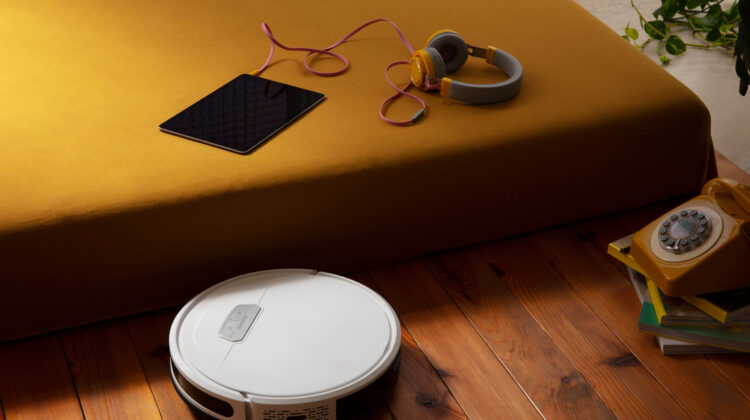
How to Choose the Right Smart Device for Your Home
Smart home technology has moved from being a futuristic luxury to a mainstream reality. From voice-activated assistants to automated lighting, security systems, and energy-saving appliances, smart devices are transforming the way we live. But with so many options available in the market, choosing the right one for your home can feel overwhelming.
This Tech Reviews & Buying Guides article will walk you through the essential steps and considerations to make the best choice for your needs, budget, and lifestyle.
Why Invest in Smart Devices?
Smart devices can make your home more convenient, energy-efficient, secure, and even fun. They allow you to control your home from anywhere using a smartphone or voice commands, automate daily tasks, and monitor your property in real-time. Some key benefits include:
- Convenience: Hands-free control through voice assistants or apps
- Energy Efficiency: Lower electricity bills through automation
- Security: Real-time alerts and remote monitoring
- Customization: Tailored settings for lighting, temperature, and more
Step 1: Identify Your Needs
Before purchasing any smart device, determine what you want to achieve.
- Security: Are you looking for cameras, smart locks, or alarm systems?
- Energy Savings: Do you want smart thermostats, plugs, or lighting systems?
- Entertainment: Interested in smart TVs, speakers, or streaming devices?
- Home Management: Would a smart assistant or appliance help with daily chores?
Listing your priorities will help you avoid impulse buys and focus on devices that truly add value.
Step 2: Understand Smart Device Categories
Smart devices fall into several major categories:
- Smart Speakers & Assistants: Amazon Echo, Google Nest Hub, Apple HomePod
- Smart Lighting: Philips Hue, LIFX bulbs, motion-sensor lighting
- Smart Thermostats: Nest Learning Thermostat, Ecobee SmartThermostat
- Smart Security: Ring Doorbell, Arlo Cameras, smart locks
- Smart Appliances: Wi-Fi-enabled refrigerators, robotic vacuums, smart ovens
- Smart Plugs & Switches: Automate traditional appliances with minimal effort
Understanding these categories will help you decide where to start.
Step 3: Ensure Compatibility with Your Ecosystem
Not all smart devices work together seamlessly. Many brands and products are designed to work best within certain ecosystems, such as:
- Amazon Alexa
- Google Home
- Apple HomeKit
Before buying, check that the device is compatible with your preferred platform. Compatibility ensures smoother integration, voice control, and automation.
Step 4: Evaluate Features and Specifications
When browsing through Tech Reviews & Buying Guides, pay attention to specific features that will enhance your user experience:
- Voice Control: Does it respond accurately and quickly?
- Automation Capabilities: Can it schedule actions or respond to triggers?
- Remote Access: Can you control it from anywhere?
- Energy Monitoring: Does it provide usage data?
- Security: Is it encrypted and resistant to hacking?
Step 5: Set a Budget
Smart devices come in a wide range of prices, from $20 smart plugs to $2,000+ integrated home security systems.
- Entry-Level: Smart bulbs, plugs, and speakers
- Mid-Range: Smart thermostats, basic security kits
- Premium: Whole-home automation systems, high-end appliances
Setting a budget in advance will keep your spending in check.
Step 6: Read Reviews and Compare Models
The smart home market is competitive, and products evolve rapidly. Reading detailed Tech Reviews & Buying Guides will help you:
- Compare performance between brands
- Discover real-world user experiences
- Identify potential issues or limitations
- Get expert recommendations on value for money
Step 7: Think About Future Expansion
Your smart home doesn’t have to be built all at once. Start with a single category (like lighting or security) and expand gradually. Choose devices that can integrate with future purchases to create a cohesive system over time.
Step 8: Consider Privacy and Security
Smart devices collect data to function effectively. Always:
- Choose brands with strong data protection policies
- Update firmware regularly to patch security vulnerabilities
- Use strong, unique passwords for device accounts
Common Mistakes to Avoid When Buying Smart Devices
- Ignoring Compatibility: Mixing ecosystems can create frustrating user experiences
- Overbuying Features: Paying for capabilities you’ll never use
- Skipping Research: Relying solely on marketing claims instead of reviews
- Neglecting Installation Needs: Some devices require professional setup
Top Smart Device Picks for 2025
Based on industry trends and Tech Reviews & Buying Guides, here are some standout devices this year:
- Amazon Echo Show 10 – Best for multifunctional smart home control
- Philips Hue Starter Kit – Best for customizable smart lighting
- Nest Learning Thermostat – Best for energy savings
- Ring Video Doorbell Pro 2 – Best for home security
- iRobot Roomba j7+ – Best for automated cleaning
Final Thoughts
Choosing the right smart device for your home is a balance of identifying your needs, ensuring compatibility, and making informed decisions based on reliable reviews. By following these steps and using trusted Tech Reviews & Buying Guides, you can build a smart home that enhances comfort, security, and efficiency without unnecessary complexity or expense.
Smart home technology will only become more advanced and interconnected in the coming years, making now the perfect time to start—or upgrade—your journey toward a truly connected living space.







